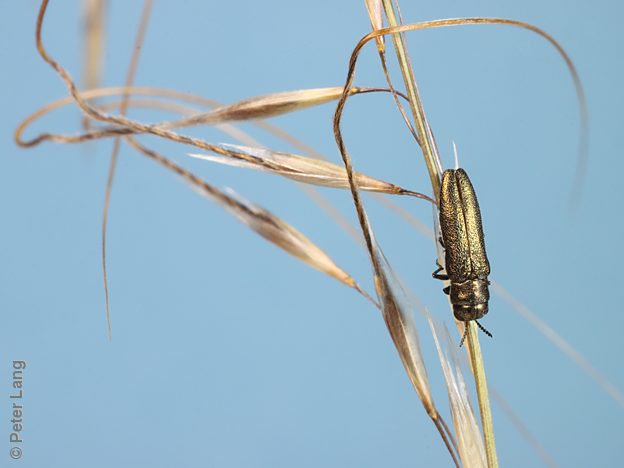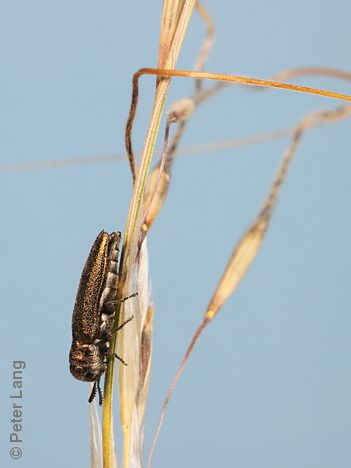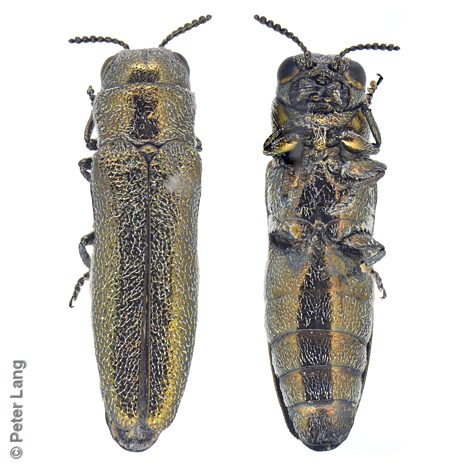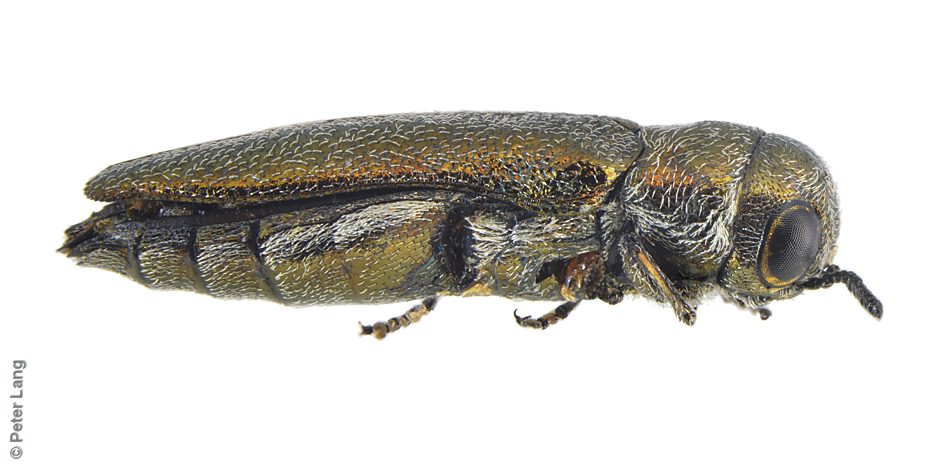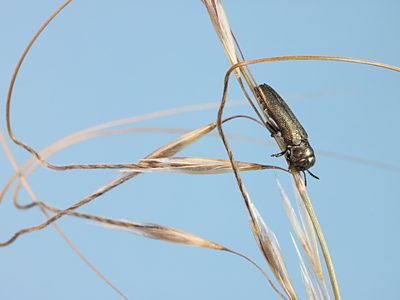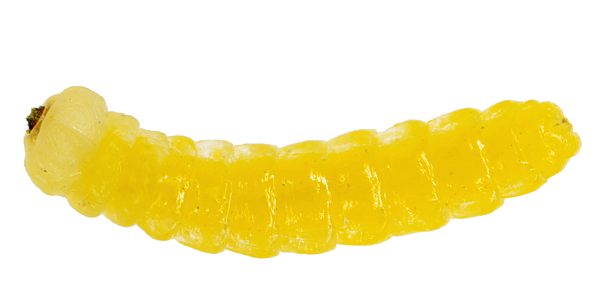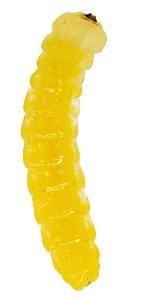Although hitherto seldom collected in SA, I have found P. pistacina to be extremely abundant across northern Eyre Peninsula in spring when its host Spear-grasses (Austrostipa spp.) are flowering or in early fruiting stages. Similar densities were also observed at a site in the NW region, indicating that it has a very wide distribution and is possibly one of the most common Buprestids in the State.
Hope 1846a originally named it as Agrilus pistacinus and commented: 'I received this minute species from the Adelaide settlement and have named it from its pistacine colour which soon fades after the death of the insect; it then becomes of a copper hue and is sometimes brassy.' The greyish-green colour of live specimens does approach that of the Pistachio nut Pistacia vera.
| Legend | records | count of breeding adults, pupae and larvae |
| sites | count of major sites (unique 10 km grid cells +/- some distinct approximate localities) |
| adult | live = extracted alive; dead = extracted dead as intact or fragmentary remains; ex billet = reared and emerged from stored sections of host; ex pupa = reared from sampled pupa |
| pupa | extracted pupa; pupa ex larva = reared pupa from larva |
| larva | extracted larva (any stage including prepupa) |
| gall (only) | hatched or unhatched gall identified by form and position rather than contents |
| Plant names in green are hyperlinked to a matching host species page with plant photos. |
Adults are strongly associated with Austrostipa (Spear-grasses) and to date have mostly been found on three species from the falcate-awned group (A. nitida, A. pilata and A. drummondii). I have found evidence that Austrostipa is also the larval host . On some A. nitida tussocks on which adults were collected I have observed frass in the base of culms, and found associated larvae of subfamily Agrilinae that are of an appropriate size to be those of P. pistacina.
| ¹ Legend | regions | SA State Herbarium regions (map)
EA: Eastern, EP: Eyre Peninsula, FR: Flinders Ranges, GT: Gairdner-Torrens, KI: Kangaroo Island, LE: Lake Eyre, MU: Murray, NL: Northern Lofty, NU: Nullarbor, NW: North-Western, SE: South-Eastern, SL: Southern Lofty, YP: Yorke Peninsula |
| size | The ellipse is the correct size when printed, indicative on a desktop screen, and likely to be wrong on a mobile device. |
